Today the city council panel passes A ban on bumper pads in Chicago, IL, as 14 deaths have been reported from bumper pads. When you are preparing for a new baby we look at crib sets. Often parents pick cute themes that are frilly and fluffy for girls and cute and masculine for boys and with every set includes a fitted sheet, a comforter, a bed skirt, and bumper pads. Parents decorate the inside of a crib thinking how cute it is and usually do not realize the dangers that these "must-have" sets can impose much like these ones. Take a look at these two sets. Both of these have fluffy bumper pads and even the soft and thick blanket, with pillows this is an accidental infant death just waiting to happen! Most parents can look at these pictures and think how cute it is and not even realize the dangers of these seemingly harmless things are but let's take a closer look shall we?
Let's look at the pillow like bumper pads. Parents put these bumper pads in their child's crib to protect them from their head banging on the wooden bars and from getting a limb between one of the rails without even considering how dangerous these bumper pads are. As adults we want comfort. A soft pillow top mattress, soft pillows, and the most softest and warmest blanket we can find. It's almost like heaven to be comfy and cozy when we go to bed right? Now think of a newborn baby sleeping...they sometimes sleep in the most strangest positions and we think "How can they be comfortable?" Babies do not NEED the same comfort that we need as adults. We are talking about babies who are squished inside a mother's uterus {talk about uncomfortable}.
Many parents do not know why bumper pads were invented. Before the 1970's the crib slats in a crib were much further apart, a child could easily get their head caught between the rails. Just look at this picture of cribs over 30 years ago {ones we most likely had when we were babies} That is why bumper pads were created to prevent a baby from strangulation if they got their head trapped between the slates. Now crib slats are much closer apart so much even a soda can can't fit through. Since crib slate are closer together bumper pads are no longer needed.
Some statistics about the dangers of bumper pads:The CPSC (Consumer Product Safety Commission) keep records of voluntary cases of deaths and injuries of products reported to them. The study conducted by Bradkey T. Thach, MD, George W. Rutherford, JR, MS, and Kathleen Harris look at reports of injuries and deaths of bumper pads from 1985 to 2005. They also searched other CPSC database from crib-related injuries that potentially might have been prevented by bumpers. Additionally, they examined 22 retail crib bumpers and described features that could be hazardous. The results:Twenty-seven accidental deaths reported by medical examiners or coroners were attributed to bumper pads. The mechanism of death included suffocation and strangulation by bumper ties. Twenty-five nonfatal injuries were identified, and most consisted of minor contusions. All retail bumpers had hazardous properties. Conclusion: (J Pediatr 2007;151:271-4) These findings suggest that crib and bassinet bumpers are dangerous. Their use prevents only minor injuries.Because bumpers can cause death, we conclude that they should not be used. To read the full report that includes death scene reconstruction pictures please go to: http://baby411.typepad.com/babybargains/files/bumper_pads.pdfThese are real stories of two babies who have died from bumper cribs from KIDS (Kids in Danger) which can be found at: http://www.kidsindanger.org/family-voices/Aiden suffocated on the crib bumper pad in his crib. He was six months old. “My beloved grandson was literally the light of my life.” Please click here to read Aiden's storyBrandon Maruyama.6/1/85 - 10/18/85. Brandon's death was ruled SIDS but his face was smushed against the bumpers with his neck hyper-extended.
These are real families who will forever miss their babies because bumper pads took their lives. If you have bumper pads in your baby's crib please remove them immediately!!! Also if you haven't already please sign our petition to remove bumper pads and share with your friends and family. You can scroll up and on the left side of the blog sign the petition or you can go here to sign it. Our babies cannot speak for themselves it is our job to protect them from hidden dangers like bumper pads! Just remember a baby has never died from putting their arm or leg through a slat in a crib or bumping into the slats, the same cannot be said about bumper pads. They were created to protect babies, but at least 27 babies have died from bumper pads and those are the ones we know about, how many more babies have suffocated from bumper pads? Bumper pads have not been recalled even though research has proven they can be a deadly hazard to an infant. We are making progress though, bumper pad sales are banned in the city pf Chicago, IL and Maryland is also proposing bumper pads be banned due to safety hazards. Bunper pads look pretty but they are not needed. Remember decorate the bursery but never the crib. The only thing that should be in the crib is a fitted sheet and the baby. Safe your money and skip the bumper pads, comforters, sleep positioners.
SIDS which stands for Sudden Infant Death Syndrome is a diagnose of exclusion. Which means that when a seemingly healthy infant dies an autopsy is performed to see if the infant's body leaves any clues to what caused a baby to die. A death scene investigation is also performed looking at the environment the baby died in. Where the baby was found. A crib, in an adult bed, on a couch, in a swing or maybe a car seat. They also look at what position the baby was in when it was found. They also receive medical records from the pediatrician or hospital if applicable. Parents or caregivers are questioned and give either a coroner, medical examiner, or death scene investigator the details leading up to the child's death. It becomes an investigation for these professionals to find out what happened to this baby and to be able to give parents answers to what caused their child's death. I personally believe infant deaths that occur when the baby is sleeping is probably one of the hardest deaths to diagnose. SIDS and other sleep related infant deaths are hard to determine because when talking about a baby dying from SIDS or SUID (Sudden Unexplained Infant Deaths) first of all their body is very small which makes it harder to find clues that will explain their death. Also if a baby dies from SIDS there are often no signs, which also happens to be true when an infant dies from suffocation like a parent who bed shares and somehow the child suffocates whether from a parental layover or something obstructing the baby's airway. Now if an adult suffocated there would be physical signs but an infant is so tiny than the signs you would typically find in adults you most likely would not see in an infant. Let me give you a good example: My son Jaleel died while we were bed sharing even though I was not over weight, on drugs, and had not consumed alcohol. I placed my son on a pillow and rolled over and went to sleep. Now the next morning the pillow was found on top of his body. Now when the coroner came and questioned me I did not tell him about the pillow, I was scared. So they had a missing piece to what caused his death so they had to work with the clues they had which was he was breastfed 2 hours before bed, he was alive when I went to sleep, he was put to sleep on his back, but was found on his stomach in the morning, we were bed sharing and what physical signs they found on Jaleel and the light pink froth that was found on the sheet, pillow, and the dried froth that was on his face, and his autopsy. Now his autopsy came back saying "Undetermined with a history of co-sleeping" Which basically means they believed he died as a direct result of bed sharing but they could not prove it so had to put his cause of death as "undetermined" My son suffocated from that pillow but even an autopsy couldn't determine if he suffocated. The medical examiner who performed my son's autopsy said that with an infant that small even under a microscope it is very hard to tell if a baby suffocated. Now we have come a long way in twenty years. We know some rules to help provide a safe sleep environment that could lessen the chances of an infant dying. Like back to sleep, putting your baby on their back to sleep EVERY TIME, even at nap times. Babies who are put on their back to sleep and then sometimes on their stomach have a higher risk of dying from SIDS than a baby who is always placed to sleep on their stomach. We are learning that blankets, bumper pads, fluffy bedding, and bed sharing increase a baby's chance of dying. We know breastfeeding is very beneficial to the baby in many ways including lowering the risk of SIDS, but breastfed babies die from SIDS too! We know that introducing a pacifier can also reduce the risk of SIDS, and that over heating can contribute to SIDS and having a fan in the babies room can help to circulate the air that also can reduce the risk of SIDS. The more babies die (sadly) provides us with more answers and ways to protect our baby while sleeping, but there is one problem I have found with all this knowledge. First of all you have the parents who will say this is a little over board and that she was raised sleeping on her stomach, with bumper pads, blankets and she survived. Yes this mom did but they are thousands out there that didn't. Just because you survived or your kids did doesn't make it okay not to practice safe sleep guidelines for your present or future children and grandchildren. We need to be better than previous generations who didn't have the knowledge we do. We need to practice safe sleep to lower the risk of infant death and also for the babies who died because without them we wouldn't know what we do today! Please don't let their deaths be in vain, please provide a safe sleep space for your baby so at least something good can come from their death. Another issue I have is the Internet. Now the Internet can be an amazing thing and it can be a horrible tool also. If you google bed sharing or co-sleeping you will find many articles citing how dangerous the practice is and how great it is. Online everyone can write a status, a blog, an article where others can search which can be great but you need to consider the source when it comes to taking advice on how you raise your children. Dr.Sears & Dr.McKennaMcKenna are not trained in SIDS reduction, they aren't SIDS experts and do not know the dangers that bed sharing can cause to an infant. Dr.Sears advises parents to bed share because it worked for him & his wife. Now that is great that it worked for his family. I am glad he doesn't know the pain and guilt that comes with losing a child to a bed sharing accident, but just because his kids were lucky does not mean it is a safe practice. When you become a doctor you take an oath to do no harm. I am sure in these doctors minds they aren't doing harm but sadly they are. Now Dr.McKenna has made some outrageous statements like babies who bed share don't cry. I understand his point for saying this because the mom is right there to meet the baby's needs but ALL babies cry regardless of where they sleep. I bed shared with two of my children and they both cried. Any doctor who studies infant deaths and the causes will tell you that bed sharing is a deadly practice even when so called "safe bed sharing" is practiced. The stories I could tell you like the mom who lost her daughter at 5 hours old after a nurse put the baby on a pillow to help get her to latch on and it worked and mom and baby feel asleep next thing this mother knows her newborn is whisked away as they try to work on her. Could you imagine having your baby and announcing it on Facebook and then hours later you are informing everyone your baby died due to an uneducated nurse? Or the mom who knew the risks associated with bed sharing and just ONE time she put her son in bed while she nursed and they fell asleep and next thing she knows he is dead, he died while nursing and somehow suffocated. Or the mom who bed shared and placed stuffed animals on the floor near the bed in case her daughter fell off the bed, she did fall off and suffocated on those stuffed animals, or the mom who slept with her baby and in the morning her shoulder was pressed into his face. These stories are real, babies die to educated parents who thought they were doing the best thing for their baby and now they have to live without their child and life with a life of guilt and what ifs. I have really gotten off topic of what I wanted this post to be about and I apologize for that! The problem with SIDS is even after decades of research and infants dying we still can't pin point what is the factor that causes these babies to die. I believe SIDS is real and my heart breaks for anyone who loses their child, especially when you have no clues to why your baby suddenly and unexpectedly died but SIDS and other infant deaths have become a real problem on many levels. Let me explain what I mean. I hope I do not offend anyone, as that is not my intent. This is my personal opinion take it for what it's worth, remember what I said about sources on the internet. First of all, we need to stop using a SIDS diagnosis as this is what by baby died from, when really it's a syndrome of no one knows why my baby died. SIDS isn't a cause of death it's an exclusion of death. All these years and we still don't know why babies die, so it had to be called something and so SIDS is the name, but the term doesn't explain what the baby died of, it explains what the baby didn't die of. Another problem I have it how SIDS & SUIDS are diagnosed. There is no nation wide protocol, they are no signs to point to a SIDS death. two babies die in different counties both unexplained and sudden infant deaths and yet one baby is labeled as SIDS and the other is labeled undetermined also know as an SUID death. The coroner or medical examiner can put what ever they believe caused the death which is easy to do when you don't have a definitive cause of death. These days it is rare (well not rare but not as common as it was even five or ten years ago) for an autopsy to say SIDS. M.E,'s (Medical Examiners) are using other terms instead like undetermined, SUID, cause unknown SUDI (Sudden Unexpected Death in Infancy), among others. I believe if a baby dies and they cannot find any contributing factors that caused the death then SIDS should be used! Now at the same time I do believe that SIDS is over diagnosed much like ADHD is. When your baby dies suddenly and at such a young age like in infancy parents are counting on the professionals who handle their baby's death to find the answers. No parent wants their child to have an autopsy performed but we don't have a choice as it is a state law when someone especially a healthy child dies. We expect to have answers that is why is it so crucial that the professionals gather all the information they can from all sources they can. Let me give you the opportunity to change how these deaths are handled and how they are classified. There is a bill we are desperately trying to get passed. The Stillbirth and SUID Prevention, Education and Awareness Act (S 1862/ HR 3418) is a bill that would provide education and prevention and a cause for stillbirths and for SIDS and SUID deaths would change so we have a standard across the board of how these deaths are examined and diagnosed please click on this link from the CJ for SIDS Foundation to learn more and to ask your local Representative to co-sponsor this crucial billI also have a problem with the terminology we use. There is a difference between bed sharing (when you sleep with a baby in bed with you) and co-sleeping (when the baby sleep next to you, but in their own sleep environment) also know as room sharing. There is also a difference between SIDS and SUID. When an infant dies while sleeping we shouldn't assume the baby died from SIDS, because many babies do not die of SIDS. Sometimes a baby dies from a preventable death like from bed sharing, or a baby who dies from bumper pads, or blankets. These are not SIDS deaths but SUID, and yet when an infant dies the public assumes it is SIDS. We need to distinguish the difference between the different types of sleeping, along with the different types of infant deaths related to sleep. Until we have better deaths scene investigations (and maybe that includes better training on what a SIDS death consists of and what a SUID death consists of) Now granted, I understand not all deaths are clear but sometimes we are labeling an infant death SIDS when is isn't and an SUID death when it isn't. How can we ever have better answers if these professionals put whatever they want down. This is their job and I would hope they can be professional regardless of their personal feelings. I believe many babies are dying from unsafe sleep and yet without the correct statistics on these deaths we will never have the answers. Regardless if it is SIDS or an SUID death there are steps as a parent or caregiver we can do to reduce the risk of death. You wouldn't risk placing your child in a car without a car seat, so don't risk your child's life while sleeping. Learn from the babies who have died so we would have better answers so your baby doesn't become a statistic. Think of it..babies spend most of their time sleeping, so wouldn't it make sense to protect them from hidden dangers while they do what they do best....{sleep} If you have any questions especially sleep related please do not hesitate to leave a comment, shoot us an email at [email protected] or find us on our FB page. Together we can make a difference by educating on safe sleep especially friends or family who are expecting a baby or who have infants and toddlers, by asking your Representative to co-sponsor the bill I mentioned above. Let's worth together to dramatically reduce the infant mortality in our country and other countries as well. Our children are our future, what kind of future will we have if babies keep dying?
The LLC (La Leche League) claims that bed sharing makes breast feeding possible and more successful according to many articles like this one that states their reasons for supporting safe bed sharing. I wonder if Barbara Sturmfels, has ever heard of Dayton West whose mother was following "safe bed sharing" guidelines. A mother who wasn't overly-tired, who exclusively breast fed, who was not using drugs of any kind, didn't drink, and isn't obese and yet she woke up one fateful morning with her shoulder pressed into her son's face. His death would have never of happened if she was properly educated on safe sleep and the dangers of bed sharing. What would Ms. Sturmfels have to say about Dayton's story? Or what about Neveah Litchfield whose mother was bed sharing and took every precaution to keep her daughter safe. She put stuffed animals on the floor next to the bed so if Neveah did fall off, she would be protected. One morning she did fall off that bed and landed on those stuffed animals and sadly she suffocated and died because her mom didn't know the dangers of bed sharing. The list goes on and on. There are many stories of moms who thought they were doing what was best for their children by listen to organizations like the LLC, Dr. Sears, & Dr.McKenna. A perfect example of that is Corynn Kernan. This is from Corynn's mother in her own words, "We planned on raising our daughter the same way we were raising our son in the attachment parenting style. No cribs with bars that resembled jail cells for us, no way! Our little one would know how important and loved she was by being as close to mom as possible at all times, especially for on demand night nursing. "This mom believed that the best thing for her little girl was to bed share, and when Corynn was two months old she died from bed sharing! We want to believe nothing bad will happen to our babies, we try our best to protect them. We research and research on how to keep our baby safe. More and more families are bed sharing and so it only makes sense that before we bring our baby into the family bed we research how safe it is. Dr. James McKenna & Dr. Bob Sears tell their patients how safe bed sharing is and it is easy to find such articles like these that support and promote bed sharing:
Why Babies Shouldn't Sleep AloneCo-Sleeping:Yes, No, Sometimes?
The problem with articles such as these, is McKenna & Sears do not know how many babies die from bed sharing, they don't research how safe it is, because they are not experts on what is killing babies from SIDS & SUID'S. Did you know that Dr. Bob Sears recommends parents bed share because it worked for him & his wife, not because it is safer.
Did you know that Dr.McKenna has done studies on bed sharing but in a labatory not in a family's own home, or in their own sleeping environment. McKenna has said some outrageous things when it comes to bed sharing, like babies who sleep with their mother don't cry. Now, I don't know about you but when I bed shared my kids cried to let me know they were hungry, how can McKenna who claims to know so much about babies who bed share and not even know they cry, like any baby who cries to communicate.
Now did you also know that parents who lost their baby to bed sharing after following these doctors (and I use that word loosely) advice refuse to even acknowledge them or their losses. They claim that babies only die from bed sharing if a mom is NOT following their so called "safe bed sharing guidelines" If they believed bed sharing is so safe then why do they have a disclaimer on their pages?
Bed sharing is being lazy, and I can admit that because I use to be you! I breast fed so I didn't have to get up in the middle of the night to make a bottle and I bed shared so all I would have to do is roll over fed my daughter as we both fell asleep, thankfully she did survive, my son wasn't so lucky!
Did you know 80 % of babies who die from SIDS or SUID die while in an unsafe sleep environment. That bed sharing increases the risk of SIDS by putting a tiny helpless baby in unsafe sleep environment. We are suppose to protect our kids because they are too little to protect themselves. Some of the best mothers in the world, lost their babies by doing what they thought or were told was best!!! Did you know more babies die while bed sharing then babies who die sleeping in a crib? Did you also know you can breast feed successfully without bed sharing? Let me share a couple stories of mothers who breast fed and didn't bed share....
"My name is Leslie and I am from Sydney Australia. I breastfed my son for 7 months and during that time I did not bed share. From day one when my son was ready for a feed I would get him out of his cot and take him into the lounge room to feed. I would feed him, settle then put him back to sleep. I had a few reasons for this. Firstly it was to not disturb my husband while he was sleeping as he had to get up early to work. In the early days I did try once to feed in bed but I found I was to sleepy and got straight out of bed! When I turned the tv on the time passed quicker and it would stimulate me to stay awake & being out of the bedroom made other things easily accessible like nappies, cloths, wipes etc!! When I was pregnant with my son me and my partner discussed our thought on issues like these and for us when our son was up one of us was out in the lounge room with him!"
This is from a mom of three babies who breast fed without bed sharing. She writes...."I became a mother at 17 years old to a happy healthy 5lb 14oz baby boy ... he was and is my word! He and his brother and sister. From the time I found out I was pregnant I wanted the best for him and that included breastfeeding. It would be a lie if I said it was easy because it wasn't. I fell asleep while nursing him when he was 4 days old. I woke up soaked in milk, he was soaked, and his dad was soaked. All of us were wet and sticky... that only happpend once I realized how dangerous that could have been! So from that point on when it was time to get up and nurse I would get a tall glass of ice water (as you become very thirsty in the first few months of breastfeeding). I would either go to the rocking chair or just sit up in bed if I wasnt extremly tired. Never nurse while laying in bed it is too easy to fall asleep when your tired. I would turn the tv on or I would sing to him while he ate. I would burb, change and back to his pack n play that was pressed against my bed where I could see him without having to get up. I could reach over and touch his chest to make sure he was ok, but never again in my bed. I did the same with all three of my children. I hear a lot of mothers that claim they bed share because of bonding or because it's "safer" or because they want them close. I am here to tell you that you can bond while breastfeeding and not bedsharing. I have 3 times they even have beds that connect to yours so your baby is close to you and safe from the bed time thrashing we all do in our sleep! I have nursed all three of my beautifull babies and support breastfeeding and extended nursing also. What I do not support is LLC condoning bedsharing or telling anyone that it is safe because it isn't!"
Breast feeding can be successful without placing your baby in your bed to sleep. Babies have suffocated while breast feeding and bed sharing, why not bond with your baby while nursing (nursing is so special and something only you can give your baby) It's another way to bond instead of falling asleep while they eat. You wouldn't prop up a bottle if your baby was formula fed so why are you "propping up your breast". They grow up so fast, spend anytime with them you can including feeding. Not to mention newborns and older babies need their diaper changed when they wake up for their feedings, so get out of bed change the baby and nurse and read them a book, sing a song, or just talk to them. Because you can't bond when you both are sleeping!!!
I have been educating parents and caregivers on how to create a safe sleep environment for infants and even toddlers for almost two years now. PACS (Parents Against Co-Sleeping) was created we have since removed that fan page and have created PAUSE (Parents Against Unsafe Sleep Environments) a group that educates on how to provide a safe sleep environment for infants because putting your baby to sleep right, helps ensure they make it through the night!
If you are a member of PAUSE or know me it is no secret why I am so passionate about safe sleep for infants, but if you don't know I will enlighten you. My son Jaleel was my third child and I bed shared with him and he died from accidental suffocation while bed sharing. I bed shared unsafely and the result was my 26 day old son died. I did not consume alcohol, was not under the influence of drugs (illegal or over the counter), and I am not obese nor were there anyone in the bed besides myself and my son. I bed shared unsafely because I placed my son on a pillow one time and it only took that once to end his life. It is most
likely I rolled over on him based on the position of him and the pillow. Now I have been told by many people who advocate or practice bed sharing that I should educate on how to safely bed share instead of saying no bed sharing. I will agree that if you practice so called "safe bed sharing guidelines" you may decrease the risk of death by a small percent but the only way to reduce the risk of death by 100 % from bed sharing, is not to bed share. In my experience the people who yell the loudest about how bed sharing is beneficial and can be done safely are the same ones who are practicing the unsafest bed sharing practices. That is why my son's story is crucial because it shows what CAN and DOES happen not only when you bed share but when you do so UNSAFELY! I see parents constantly posting pictures of infants bed sharing and not following safe bed sharing guidelines. Examples: Dad bed sharing with baby, siblings in bed with baby, fluffy blankets and pillows near the baby's face, parents falling asleep with their babies in recliners and sofas just to name a few. Not one of these scenarios are safe ways to bed share. I know parents who put their baby to sleep on pillows...the only difference between those babies and mine is that those babies survived! We all need to take responsibility for creating a safe sleep environment for babies and educating parents and caregivers on what a safe sleep environment looks like compared to what an unsafe one looks like. Many parents and even child care providers are unaware of the dangers of a baby sleeping in an adult bed (even if they are the only ones in the bed) or things that should never be part of a baby's sleep space like bumper pads, stuffed animals, blankets, soft mattress or bedding and that is why PAUSE exists so you have a place to get information on how to protect your baby while they are sleeping.
Now like I have stated I have a personal issue to spread the word on safe sleep. I love what I do even though I do not get paid for it. Now when you are a bereaved parent who lost their child to a preventable death you want to tell everyone how dangerous it is and there is a safer way. Like bed sharing is dangerous and a safer way is to room share, but not everyone is willing to listen and that is to be expected. A friend posted a podcast by Carol Tavris "Mistakes Were Made" It was very interesting. It talks about the Theory of Cognitive Dissonance which is when a discomfort caused by holding conflicting cognition's (e.g., ideas, beliefs, values, emotional reactions) simultaneously. In a sate of dissonance, people may feel surprise, dread, guilt, anger, or embarrassment. The theory of cognitive dissonance in social psychology proposes that people have a motivational drive to reduce dissonance by altering existing cognition's or adding new ones to create consistency. Basically this means that even when people are shown evidence supporting a different opinion or theory of their own they cling to their opinion and research because they cannot believe or accept that bed sharing is dangerous and they are putting their child's life at risk, so instead they stick to their beliefs and may even believe even stronger when someone tries to challenge their own beliefs or thoughts. They believe bed sharing is safe and they have their own research to back it up. They have to believe their way is the right way, that is it beneficial to not only their baby but to their relationship as parent and child.
Now I have learned a lot in the almost two years I have been advocating for safe sleep for infants. In the beginning I believed everyone who heard the story of my son and his untimely death would have no choice but to agree with me, I found out all too quickly that this is not the case. Although, people sympathize with my loss and feel it is sad they do not believe what happened to me would happen to them. So once again they live in denial and convincethemselves that I must have done something wrong that caused his death because very rarely do babies die from bed sharing. Then I realized I need to get them to listen at any cost and there are few tactics to get your point across. One way is the fear based approach where you try to scare them into not bed sharing. Although this may work for some it will not work for everyone and we don't want people to not bed share based on fear we want them to see the statistics and facts and come to the same conclusion we have that bed sharing is a very risky and deadly practice for infants. Then there is the guilt approach where you play the grieving mother card which only makes you look desperate and possibly a nut case who is in need of therapy ASAP. I have used this card many times when people just were not listening. I would try and make them understand the reality that has become my life. Then there is the anger approach where you are now seeing read and you are DETERMINED to MAKE them see it your way!!! None of these approaches work and I would not suggest any of them, a lesson I have learned the hard way. Some people will not listen even if it's approached in a positive way because they believe bed sharing to be safe and nothing you say will change their mind. You need to accept that, but maybe you will educate someone and they will listen and choose room sharing over bed sharing and that is why we do this. Even if only one baby is ever saved, consider it a job well done.
Now I have told you why people stick to their beliefs and the approaches that will most likely not change a person's mind so you may be asking how do we get them to realize the truth. First there are a few things to consider... 1. No one likes to be told they are putting their children's life in danger or felt as though they are not a fit parent, they are stupid, or feel as though they are being attacked. Anyone who is being belittled or feels they are being attack while put up their wall and will not listen to anything you say regardless if you have facts to back it up. So how do we educate without making parents feel we are questioning their parenting skills. We need to present facts of why bed sharing is unsafe while being respectful and compassionate. Remember most of us all bed shared at once so we understand why these parents would do it but we need to educate them so they do not become us. Anger and fear is not the way to do this! Let them know you understand where they are coming from but a lot of research has been done and we are learning more and more. 10, 20, 30's years ago we didn't know what we know now. We didn't know bumper pads, sleep positioners, tummy sleeping, and blankets were dangerous. A lot of lives have been saved due to research and to past babies dying so we could learn more. We now know that bed sharing increases a baby's chance of not making it to their first birthday. We aren't here to judge you, but just to give you the correct information so you can make the best choice for your baby while they are sleeping, after all babies spend most of their days/nights sleeping. Let's work together and protect babies from preventable deaths like an unsafe sleep environments, and make sure we are reaching people through respect, compassion, and understanding. Maybe if we change our approach we can save even more babies lives!!!! Something to think about it!!!
Everyday in the United States 12 babies die from being placed in an unsafe sleep environment. That equals to 4, 380 babies that die every year from unsafe sleep. 4,380 parents wake up to find their baby unresponsive, have to preform CPR, have a coroner come and investigate their home and figure out how and why the baby died. That is 4,380 coffins or cremations and 4, 380 parents who will live with a life of guilt, sorrow, what-if's, cherished memories, and empty dreams. 4,380 babies that will never grow up and it could have been prevented.
*Note: This does not include a SIDS death, but we will get to that a little later*
How can so many babies die without others being aware of this silent killer? Did you know the number was so high? Neither did I and I work to educate parents on creating a safe sleep environment for infants. How can so many infants die everyday and yet we aren't doing all we can to educate parents and caregivers to reduce and eliminate these tragic numbers?
The recent news articles are alarming:
Sleep Mishaps Leading Cause of Infant Deaths
http://www.cantonrep.com/newsnow/x742509999/Sleep-mishaps-leading-cause-of-infant-deaths
"The Stark County Child Fatality Review Board reviewed
all deaths of Stark County children up to 17 years old since
2000. Between 2000 and 2009, there were 50 sleep-related
deaths. And 38 were the result of co-bedding with other people, according to
Stark County Health Commissioner William Franks."
Children Die as Dangers are Ignored
http://www.stltoday.com/news/special-reports/daycares/article_95ff3136-e937-11e0-86c7-0019bb30f31a.html
"In the last several years, dozens of Missouri families
have dealt with unfathomable losses in the very places they were assured their babies' safety would come first: paid child care.
From 2007 through 2010, at least 45 children - most of them infants - died in child care for reasons other than existing illnesses."
Many Babies die from Suffocation, Not SIDS Study Shows
http://www.vcstar.com/news/2007/dec/16/many-babies-die-from-suffocation-not-sids-study/
"Coroners who carefully follow federal guidelines while probing the 4,000 unexpected infant deaths nationally each year are discovering a hard truth. Most of these babies are suffocating in completely avoidable accidents, a nine-month investigation by Scripps Howard News Service has found."
We are realizing that what we once thought was SIDS ( Sudden Unexplained Infant death) is actually SUID (Sudden Unexpected Infant Death). Many people these are one in the same but they aren't. A SIDS death is when an apparently healthy infant dies and after a complete death scene investigation and autopsy no cause of death can be found. A SUID death is usually when a baby died from a preventable or explained death like an unsafe sleep environment. When a baby dies depending on the state and county the death occurred in, usually a coroner or death scene investigation comes to the home and takes pictures of the death scene, reviews the death scene to try to find clues to what could have caused a baby to die suddenly and unexpectedly. Some times the answers are clear and other times there is nothing to indicate a reason a baby died. It is imperative that a complete and through death scene investigation is performed. Unfortunetly, often times a death scene is not being investigated properly. Depending who completes an infants death scene and who performs the autopsy depends on what the cause of death is determined to be on an autopsy and/or death certificate. You have some professionals who do not believe in SIDS and refuses to write it on an autopsy or death certificate even if nothing points to anything else. Now, let's talk about what a SIDS death is. A baby who dies of SIDS is placed in a safe sleep environment and nothing is in the way or in their sleep space that could interfere with their breathing. What does this mean exactly? Let's discuss what a safe sleep environment looks like and what isn't
considered a safe sleep environment for an infant.
Safe Sleep Environment:
A baby should be sleeping in a new and safe crib that has not been recalled. Or a pack n play.
*Bassinettes are not recommended because they are often padded and can restrict airflow. where a crib or pack n play either has mesh sides or crib slats they accommodate for good airflow to an infant.*
Parents should room share with their infant in their bedroom but NEVER share a bed with your baby or any other sleep surface. Babies who bed share are more likely to die than a baby who is placed to sleep in a crib.
Never place an infant to sleep on their stomach! Every sleep counts which means even for naps a baby should be placed on their back.
Use a pacifier to help reduce the risk of SIDS and there is a study that says a fan can help circulate the air.
Although decorating a baby's crib looks nice it is not needed and can be deadly to an infant. Decorate their nursery but not their sleep safe. This means nothing in the crib except for a fitted sheet. No
blankets, bumper pads, sleep positioners, toys/stuffed animals, as all of these have been linked to suffocation.
Use a Halo Sleep sack to keep the baby warm, or dress baby warmly in the colder months but prevent overheating. Dress your baby as you would dress yourself.
Unsafe Sleep Environment: 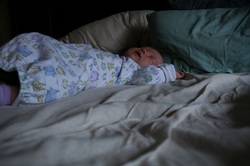
For more information on how to create a beautiful nursery without decorating the crib please visit:A face book page dedicated on keeping babies sleeping safely from the CJ Foundation of SIDS.
Sleep in safety, grow in style "Saving babies: Exposing sudden infant death in America"This is a study from Scripps on infant deaths dating as far back as 1992. We are
finding that many of the deaths that were once classified as SIDS an
unpreventable and mysterious death,
"In fact, we are getting further away from solving the mystery of Sudden Infant Death Syndrome, because of sloppy procedures, manipulation of statistics, misguided efforts to protect the feelings of grieving parents, and deliberate attempts to make SIDS go away, at least on paper.
The Scripps review of 40,000 infant deaths going back to 1992 revealed that the quality of infant death investigations, the level of training for coroners, and the amount of oversight and review vary enormously across the country. In many cases, professional bias -- both for and against a diagnosis of SIDS -- trumps medical evidence.As a result, the odds that an infant's death will be correctly diagnosed are often determined by geography rather than science. In other words, the same death might be called SIDS in one county and called something else just down the road."
"There's no rhyme or reason to what medical examiners are diagnosing as SIDS, suffocation, strangulation or undetermined," said Theresa Covington, director of the National Center for Child Death Review Policy and Practice at the University of Michigan. "The variability is across the country and within the states.""If we had a standard approach to investigating and classifying these deaths, our approach to prevention and research could be a lot clearer," said Dr. James Kemp, a leading SIDS researcher at St. Louis University. "The whole reason for keeping count is to figure out how to avoid the next infant death."
Scripps conducted an extensive study into how infant deaths are investigated in the United States using records provided by the Centers for Disease Control and Prevention. The records detail the sudden deaths of 40,239 infants, half of whom died in the 1990s and the rest in a five-year period from 2000 to 2004.
The records of the most recent infant deaths, from 2000 to 2004, can be examined in the first searchable database of its kind at
www.scrippsnews.com/sids/database.
The review found enormous variation in how the deaths
of infants are investigated and classified. The SIDS rate, according to the
data, is 12 times higher in Mississippi than in New York. Most experts agree
that the big differences are caused by how the deaths are classified, not by how
the babies died.
Variations are sometimes even greater from county to
county within a state because coroners take widely different approaches to how
they determine the cause of infant deaths in their areas.
Federal records show a dramatic decline in reported
cases of SIDS, dropping from 4,895 cases in 1992 to only 2,247 in 2004, the most
recent year for which complete data is available.
The records examined by Scripps showed that cases of
SIDS virtually disappeared in some states and cities over the last several
years, but closer examination of the data makes it evident that thousands of
those lives have not been "saved," but rather lost under another
name.
Coroners and medical examiners said SIDS was responsible for nearly 80 percent of all sudden infant deaths 15 years ago and only 55 percent in 2004. What increased during this time were diagnoses that CDC statisticians labeled as "threats to breathing" and "other ill-defined causes of mortality."
Some researchers think that this "code shifting" of infant death causes has substantially overstated the success of public health efforts against SIDS. The diagnosis of SIDS has been replaced on death certificates by new and vague terms like "undetermined cause," "sudden and unexplained death" and "other ill-defined and unknown causes of mortality."The result is that, while deaths attributed to SIDS are down, the overall number of sudden infant deaths has remained steady, and even ticked up in some years, since 2000.
Among the other findings of the Scripps investigation:
In some states and counties, investigators are told not to issue a SIDS diagnosis if any other cause is suspected, causing the rate at which the syndrome is reported to the Centers for Disease Control and Prevention to plummet to just a fraction of the national average. Several large metro areas reported no SIDS cases during the five-year period even though there were dozens of sudden infant deaths.
Other jurisdictions offer extra pay to coroners who fill out complex medical forms detailing the circumstances of sudden unexplained infant deaths. Some have reported as much as a 55 percent increase in SIDS deaths since the incentives began.The variance in diagnoses can be equally great within the same state, so that one county is diagnosing SIDS at three or even four times the rate of its neighboring counties. States with local and state boards assigned to review the evidence in mysterious infant deaths are three times more likely to identify children who have died from suffocation or smothering than do states with little or no oversight in child deaths. The 28 states that have statewide medical examiners
are more likely to diagnose SIDS deaths than the 22 states without a top medical
examiner. States that mostly rely upon appointed, well-trained medical examiners to investigate infant deaths issue 10 percent more SIDS diagnoses than states that elect often less-well-trained coroners, many of whom are not required to have college degrees. Coroners, who generally are not required to be doctors or even have any medical background, were 37 percent more likely than medical examiners to issue a diagnosis of "undetermined causes" on the death certificates of infants.
Also I want to leave you with something that Deborah Robinson said. She is a death scene investigator in Seattle, Washington.
"I've been reading some of the posts regarding SIDS, Suffocation, Overlay and what they can and cant tell from the autopsy. Rarely can the distinction be made purely by the autopsy. It is critical that the coroner or medical examiner take into consideration the entire death scene when making their certification. Some mechanical suffocation such as wedging can be identified but for the most part, the autopsy is benign, which is why so many question regarding how your baby was placed and how your baby was found are asked. I'm not sure everyone also understands the difference between a Medical Examiner and Coroner. ME is a forensic pathologist who is board certified. A coroner is an elected official. In our state which is similar to most, the only requirement to be a coroner is to be over the age of 18, a resident of the county you are running in and pay your filing fee.
They typically will contract with someone to perform an autopsy if warranted."
Every person needs to take a stand and educate yourselves on how to create a safe sleep environment, and pass on this information to anyone who has or cares for infants. Imagine if everyone was not only educated and practiced these guidelines how the number of infant deaths would dramatically decrease. I would also like to note that SIDS is a real problem and diagnose but too often babies are dying from a preventable death and the parents are not being told. This isn't SIDS vs. SUID it is about reducing the numbers of all infant deaths regardless of the cause. if you have any questions please feel free to comment or contact me directly at [email protected]
|
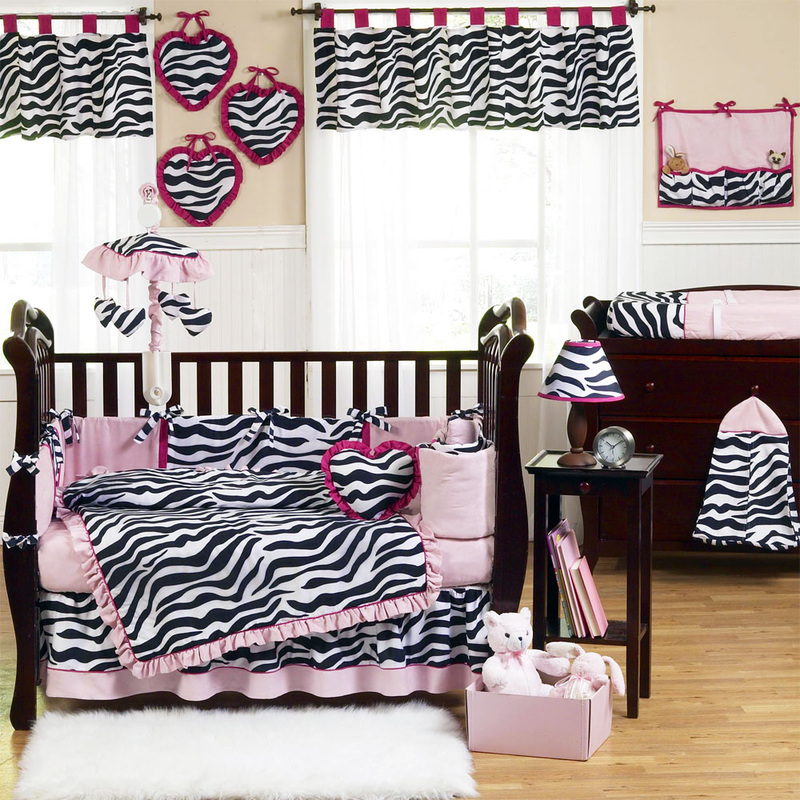
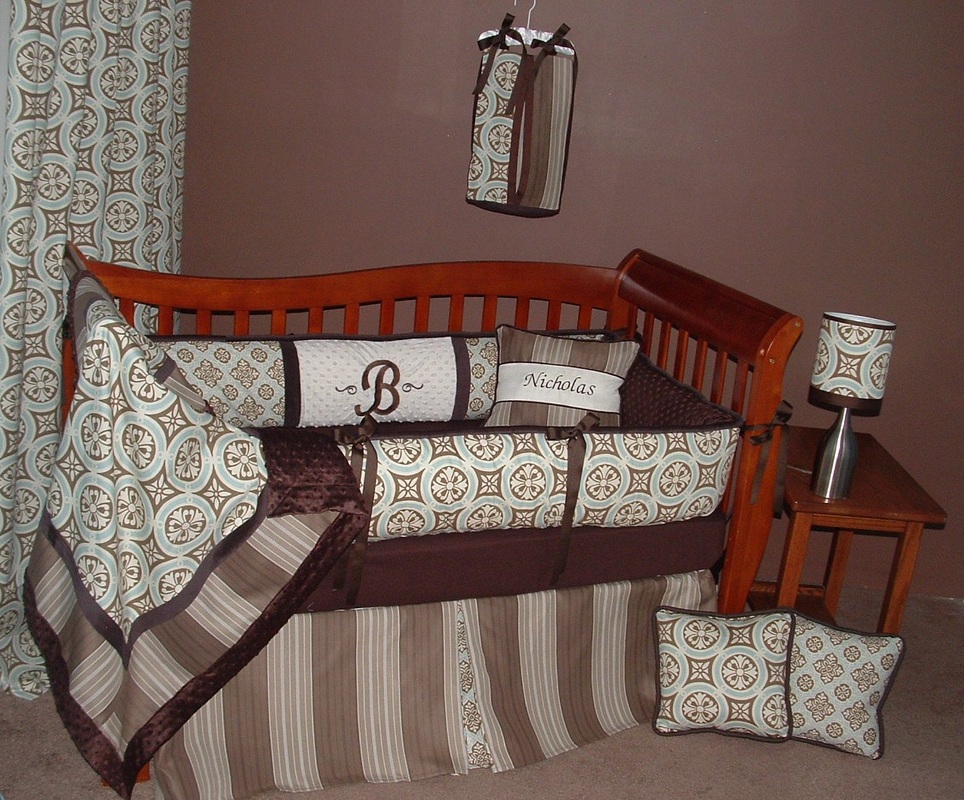
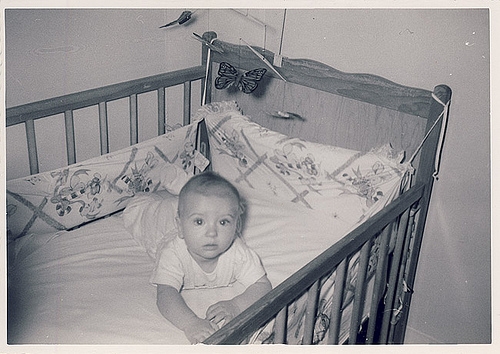
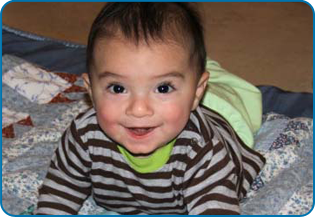
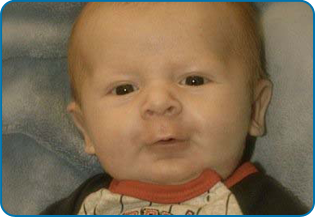
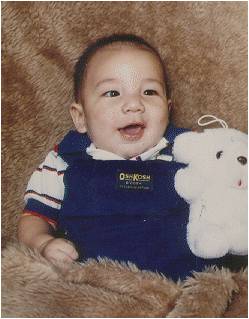
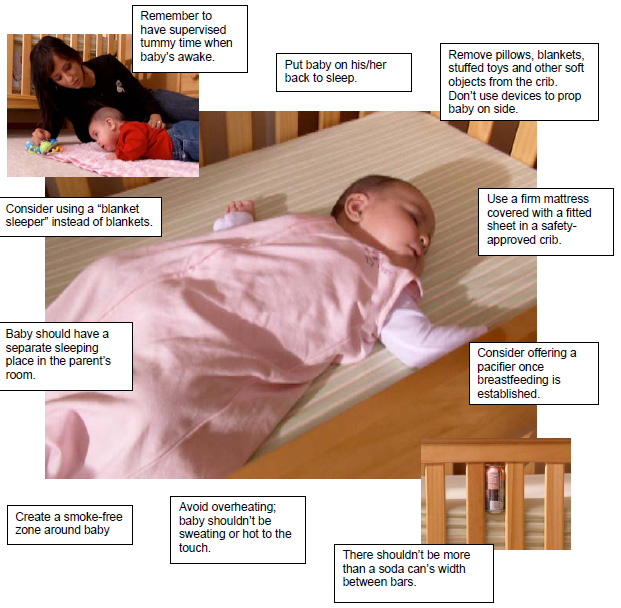

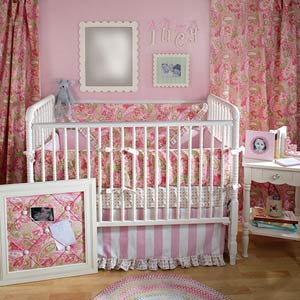
 RSS Feed
RSS Feed